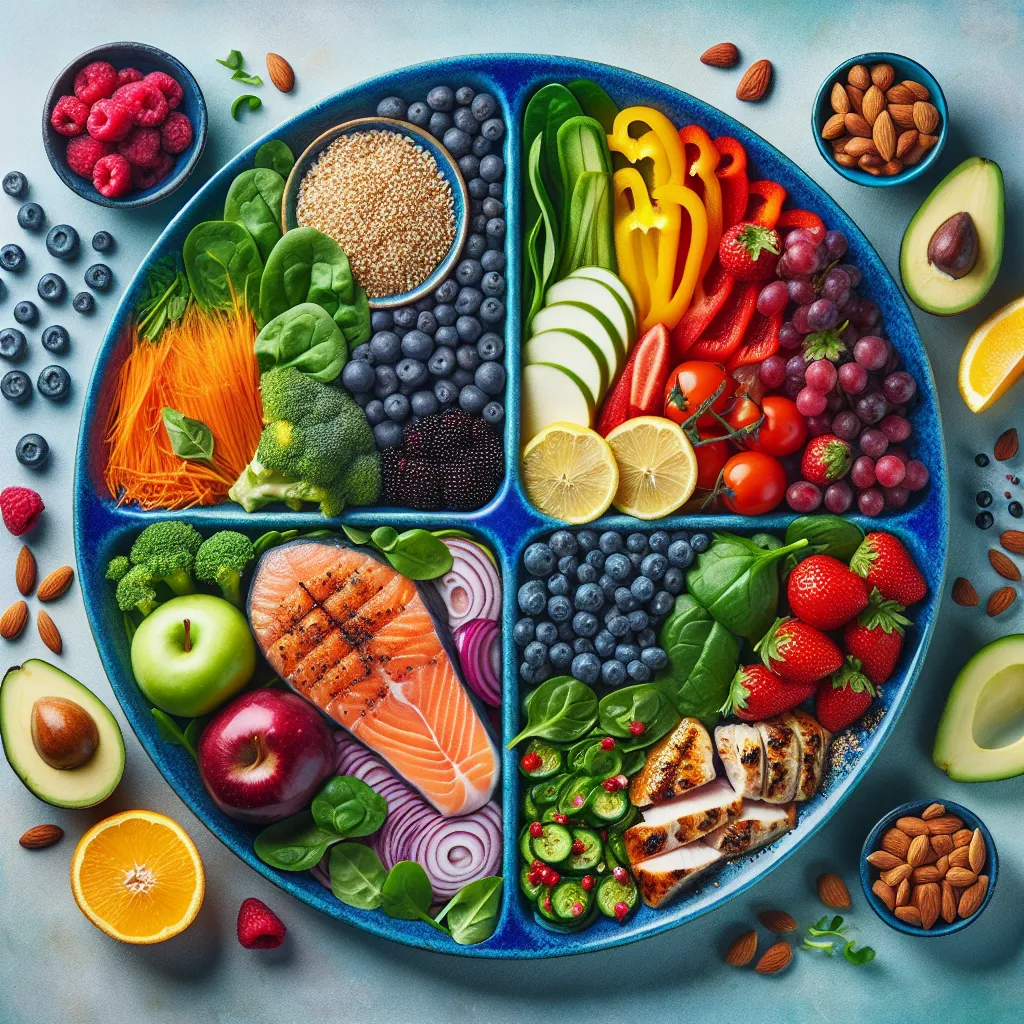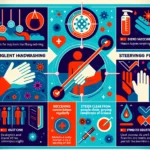The IELTS Reading section is a crucial component of the test, assessing candidates’ ability to comprehend complex texts and extract relevant information. Today, we’ll focus on a topic that has been increasingly prevalent in recent years: creating a balanced diet plan for weight loss. This subject has appeared in various forms in past IELTS exams and, given its ongoing relevance to public health, is likely to resurface in future tests.
Based on our analysis of previous IELTS exams and current trends, we predict a high probability of encountering passages related to nutrition, weight management, and balanced diets in upcoming tests. To help you prepare, we’ve created a practice reading exercise that mirrors the format and difficulty level of an actual IELTS Reading test.
Practice Reading Passage
The Art of Crafting a Balanced Diet for Effective Weight Loss
In an era where obesity rates are soaring globally, the quest for effective weight loss strategies has never been more pertinent. While fad diets and quick fixes abound, nutritionists and health experts unanimously agree that the key to sustainable weight loss lies in creating a balanced diet plan. This approach not only aids in shedding excess pounds but also ensures overall health and well-being.
The foundation of a balanced diet for weight loss rests on the principle of calorie deficit – consuming fewer calories than your body burns. However, it’s not just about reducing caloric intake; the quality and balance of nutrients are equally crucial. A well-structured diet plan should include a mix of macronutrients – proteins, carbohydrates, and healthy fats – as well as essential micronutrients like vitamins and minerals.
Proteins play a vital role in any weight loss diet. They help preserve lean muscle mass, which is often lost during weight reduction, and increase satiety, reducing overall calorie intake. Lean meats, fish, eggs, legumes, and low-fat dairy products are excellent protein sources. Experts recommend allocating about 25-30% of your daily caloric intake to proteins.
Carbohydrates, often vilified in weight loss circles, are actually an essential part of a balanced diet. The key is choosing the right types of carbs. Complex carbohydrates found in whole grains, vegetables, and fruits provide sustained energy and are rich in fiber, which aids digestion and promotes feelings of fullness. These should constitute about 45-50% of your daily calorie intake.
Fats, contrary to popular belief, are not the enemy of weight loss. Healthy fats, such as those found in avocados, nuts, seeds, and olive oil, are crucial for hormone production and nutrient absorption. They also contribute to satiety, helping control appetite. About 20-30% of your daily calories should come from healthy fats.
 Balanced diet plate for weight loss
Balanced diet plate for weight loss
Portion control is another critical aspect of a balanced diet plan. Even healthy foods, when consumed in excess, can lead to weight gain. Using smaller plates, measuring servings, and being mindful of portion sizes can help manage calorie intake without feeling deprived.
Hydration often goes overlooked in diet plans but is crucial for weight loss. Water not only helps flush out toxins but also aids in appetite control. Often, thirst is mistaken for hunger, leading to unnecessary snacking. Aim for at least 8 glasses of water daily, and consider replacing high-calorie beverages with water or unsweetened tea.
Meal timing and frequency can also impact weight loss. While the traditional three-meals-a-day approach works for some, others find success with more frequent, smaller meals. The key is to find a pattern that helps maintain stable blood sugar levels and prevents overeating.
Incorporating a variety of colorful fruits and vegetables ensures a wide range of vitamins, minerals, and antioxidants. These nutrients support overall health and can help combat inflammation, which is often associated with obesity.
Lastly, sustainability is crucial in any weight loss plan. A balanced diet should be flexible enough to accommodate occasional treats and social events. Extreme restriction often leads to binge eating and can derail long-term success. The goal is to create a lifestyle change rather than a temporary fix.
In conclusion, creating a balanced diet plan for weight loss is a nuanced process that goes beyond simply cutting calories. It involves carefully selecting nutrient-dense foods, balancing macronutrients, controlling portions, and adopting sustainable eating habits. By following these principles, individuals can achieve not just weight loss, but improved overall health and well-being.
Questions
Multiple Choice
-
According to the passage, what is the foundation of a balanced diet for weight loss?
A) Eating only proteins
B) Consuming more calories than burned
C) Creating a calorie deficit
D) Avoiding all carbohydrates -
What percentage of daily caloric intake should come from proteins in a weight loss diet?
A) 10-15%
B) 25-30%
C) 45-50%
D) 60-70% -
Which of the following is NOT mentioned as a benefit of including healthy fats in the diet?
A) Hormone production
B) Nutrient absorption
C) Appetite control
D) Muscle building
True/False/Not Given
- Fad diets are more effective for long-term weight loss than balanced diet plans.
- Complex carbohydrates provide sustained energy and are rich in fiber.
- Drinking water can help control appetite during weight loss.
- All individuals should follow the traditional three-meals-a-day approach for effective weight loss.
Matching Headings
Match the following headings to the correct paragraphs in the passage:
A) The Role of Proteins in Weight Loss
B) Importance of Portion Control
C) Hydration and Weight Loss
D) Balancing Macronutrients for Effective Weight Loss
E) The Myth of Fats in Weight Loss Diets
- Paragraph 4
- Paragraph 5
- Paragraph 6
- Paragraph 7
Sentence Completion
Complete the following sentences using NO MORE THAN THREE WORDS from the passage:
- A well-structured diet plan should include a mix of macronutrients and essential _____.
- Experts recommend allocating about _____ of daily caloric intake to proteins.
- _____ is another critical aspect of a balanced diet plan, even for healthy foods.
- The goal of a balanced diet plan is to create a _____ rather than a temporary fix.
Answer Key and Explanations
-
C) Creating a calorie deficit
Explanation: The passage states, “The foundation of a balanced diet for weight loss rests on the principle of calorie deficit – consuming fewer calories than your body burns.” -
B) 25-30%
Explanation: The text mentions, “Experts recommend allocating about 25-30% of your daily caloric intake to proteins.” -
D) Muscle building
Explanation: The passage lists hormone production, nutrient absorption, and appetite control as benefits of healthy fats, but does not mention muscle building. -
False
Explanation: The passage implies that balanced diet plans are more effective, stating that nutritionists and health experts agree on the importance of a balanced diet for sustainable weight loss. -
True
Explanation: The text directly states, “Complex carbohydrates found in whole grains, vegetables, and fruits provide sustained energy and are rich in fiber.” -
True
Explanation: The passage mentions, “Water not only helps flush out toxins but also aids in appetite control.” -
Not Given
Explanation: The text discusses different meal timing approaches but does not state that all individuals should follow a specific pattern. -
A) The Role of Proteins in Weight Loss
-
E) The Myth of Fats in Weight Loss Diets
-
B) Importance of Portion Control
-
C) Hydration and Weight Loss
-
micronutrients
Explanation: The passage states, “A well-structured diet plan should include a mix of macronutrients – proteins, carbohydrates, and healthy fats – as well as essential micronutrients like vitamins and minerals.” -
25-30%
Explanation: The text directly mentions, “Experts recommend allocating about 25-30% of your daily caloric intake to proteins.” -
Portion control
Explanation: The passage states, “Portion control is another critical aspect of a balanced diet plan. Even healthy foods, when consumed in excess, can lead to weight gain.” -
lifestyle change
Explanation: The conclusion of the passage states, “The goal is to create a lifestyle change rather than a temporary fix.”
Common Mistakes to Avoid
- Overlooking keywords: Pay attention to qualifiers like “often,” “sometimes,” or “always” as they can change the meaning of a statement.
- Falling for distractors: In multiple-choice questions, some options may be partially correct but not the best answer. Always choose the most accurate and complete option.
- Over-generalizing: Avoid assuming information that isn’t explicitly stated in the passage, especially in True/False/Not Given questions.
- Misinterpreting numbers and percentages: Be precise when dealing with numerical information, as small differences can be crucial.
- Ignoring context: Always consider the broader context of the passage when answering questions, especially for matching headings tasks.
Key Vocabulary
- Sustainable (adjective) /səˈsteɪnəbl/ – able to be maintained at a certain rate or level
- Deficit (noun) /ˈdefɪsɪt/ – the amount by which something is less than expected or required
- Satiety (noun) /səˈtaɪəti/ – the feeling of being full or satisfied with food
- Vilified (verb) /ˈvɪlɪfaɪd/ – spoken or written about in an abusively disparaging manner
- Nuanced (adjective) /ˈnjuːɑːnst/ – characterized by subtle shades of meaning or expression
Grammar Focus
Complex sentences with subordinating conjunctions:
“While fad diets and quick fixes abound, nutritionists and health experts unanimously agree that the key to sustainable weight loss lies in creating a balanced diet plan.”
This sentence structure uses “while” to introduce a contrast between two ideas. Practice forming similar complex sentences to improve your writing skills in the IELTS exam.
Tips for IELTS Reading Success
- Time management: Allocate your time wisely across all three passages in the Reading test.
- Skim and scan: Quickly skim the passage for main ideas, then scan for specific details when answering questions.
- Read questions carefully: Understand what each question is asking before searching for the answer.
- Use context clues: If you encounter unfamiliar words, try to deduce their meaning from the surrounding context.
- Practice regularly: Familiarize yourself with various question types and develop strategies for each.
- Stay focused: Concentrate on the passage and questions at hand, avoiding distractions.
- Transfer answers carefully: Ensure you transfer your answers to the answer sheet accurately and clearly.
Remember, success in IELTS Reading comes with consistent practice and application of effective strategies. Focus on improving your overall reading comprehension skills alongside specific IELTS techniques for the best results.
For more information on creating effective workout routines to complement your balanced diet plan, check out our article on how to create a workout routine at home. Additionally, to deepen your understanding of nutrition, explore our detailed guide on macronutrient distribution for optimal health and weight management.


